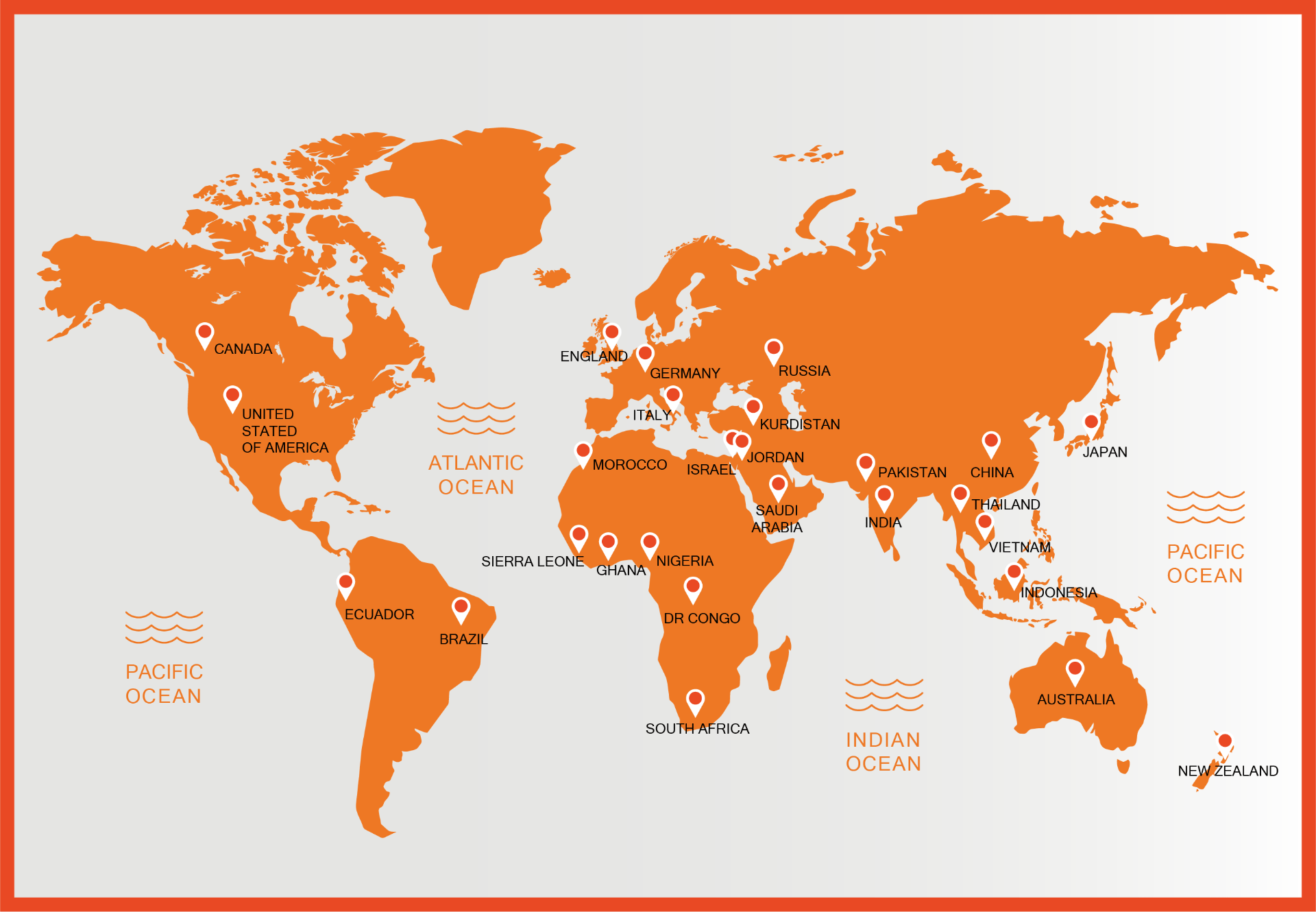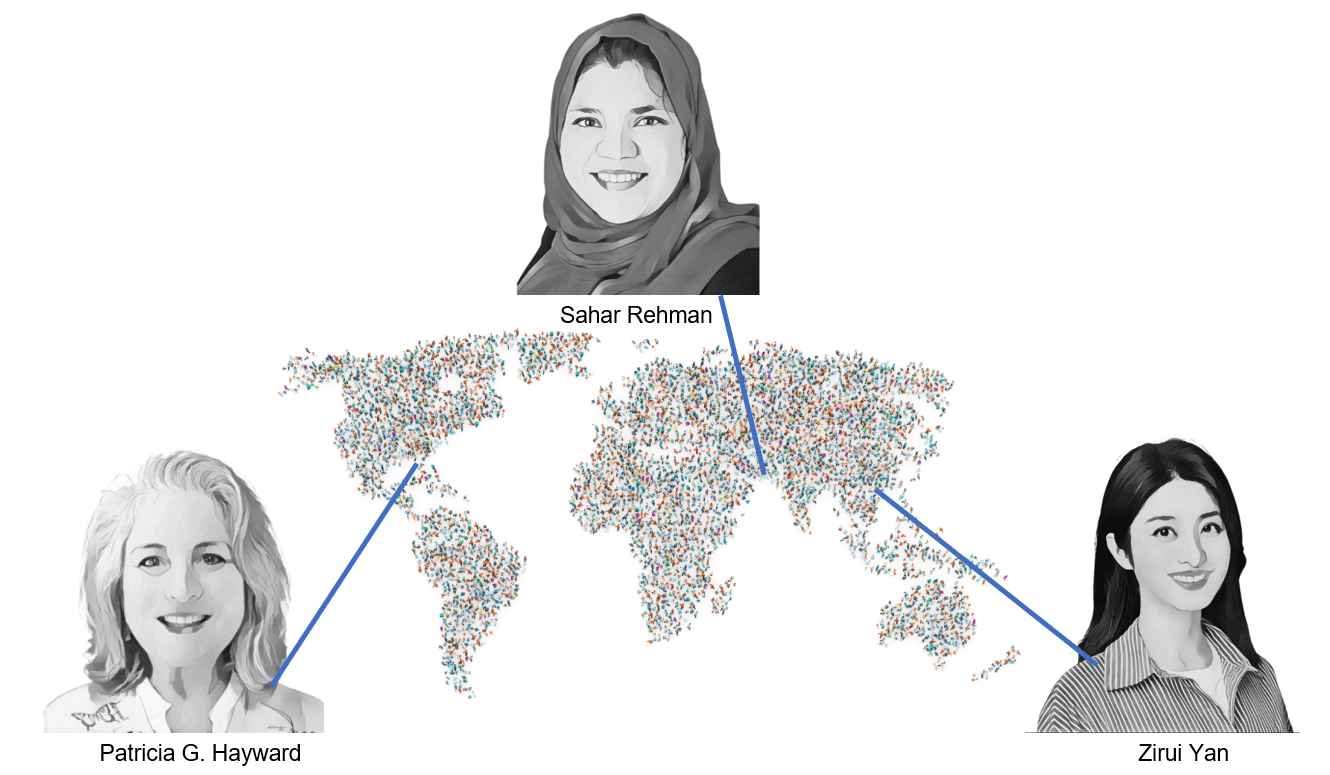There was that moment when Zirui, Sahar, and Patty moved from researching three cases to present at a conference to agreeing, “We should write a book!”. Considering the pandemic and many barriers we were facing, there was also that moment when we agreed, “We have to keep moving forward!”.
Finally, the moment came, “We have arrived!” We are proud of our community, collection of 55 cases, and the Cultural Transformation Framework developed resulting from the multi-case research in Women Community Leaders and Their Impact as Global Changemakers (2022). The ebook is available to Northeastern University affiliates.

One of the connecting points for Zirui, Sahar, and Patty is we all have studied organizational communication and cross-cultural communication. However, we likely have more differences in our professional paths than similarities. How is it that the three of us could jointly step into the roles of editors, authors, project managers, researchers, and communication strategists? Reflecting on our book evolution process, we recognized our organizational communication and cross-cultural communication skills were imperative across all these roles. Our recipe for success was employing different communication styles, seeking to understand our stakeholders, and building culturally intelligent relationships.
Although it might be obvious, it is important to articulate that communication is more than the words being used and voiced. We realized early in the process how critical it is to understand the receivers of the communication.
As Erin Meyer (2014) emphasized, a communication mistake in international collaborations is the lack of understanding of different cultures. There were times when we needed our voices to be high context. For example, rather than requiring a particular narrative framework for the cases, we shared the reasoning why we were seeking that framework. Throughout the negotiation process to secure the publisher, Editorial Advisory Board members, contributing authors, and many volunteers, how we communicated was as important as what we communicated. Not only are there over twenty national cultures involved, our network incorporated diversity across genders, race, ethnicities, socio-economic backgrounds, and professional roles. As Justinas Braslauskas (2020) intercultural communication research findings suggested, we found our ability to be flexible and creative supported our success when facing and managing ambiguity, along with conflicts.
A major aha moment was the realization that co-editing a book is like managing a complex project. The truth is we’ve dedicated almost an equal amount of time in communicating with various stakeholders as in the writing and planning process, if not more. As we reflected on the journey of managing the book project, we realized that we’ve adopted different communication styles in different scenarios. We made efforts to be intentionally authentic in motivating contributing authors, giving them feedback on their drafts, cherishing their values, and implementing deadlines. We also tried to keep close contact with our eleven Editorial Advisory Board members and 61 contributing authors through regular update sessions (See Figure 1). Additionally, we consciously sought to understand the changes happening in their lives. Respecting their perspectives and experiences, we were being sincere in seeking their advice and asking for support. Throughout the process, we did encounter some difficult conversations where we needed to be flexible to maintain relationships and practice effective discourse.
Our second key recognition is that communication is critical in building relationships. Growing a network requires adapting to an effective communication style, strategy, and focusing on our audiences. We had to design and deliver several communications and messages for this project. With the vast diversity of our contributing authors, change agents, Editorial Advisory Board members and other collaborators, we had to think critically and pay close attention to our communication. When is it appropriate to message all? What should be the length, the timing, the content, the context, the frequency, and the communication channel (e-mail, LinkedIn Group and Facebook groups)? How did we decide whether to create a direct or spirited message? Each decision was based on our audience and purpose for our engagement. We built an empowering community by employing cultural relativism, coming from a neutral perspective. Having a culturally intelligent approach to our communication, we were able to build a trusted network, rapport, and credibility throughout the entire project.

In conclusion, we became more aware of our own communication skills and continued opportunities for growth, whether having over 35 years or 10 years of organizational communication experience. Three specific tips learned supporting our cross-cultural and organizational communication skills are as follows:
- More is not always better, sometimes the additional words are just noise.
- The nuance of editing is being able to let go.
- The purpose needs to be explicitly clear to inspire others.
We firmly believe that communication skills are a powerful force to move any goal forward.
Patricia Goodman Hayward, Ed.D., Faculty
Sahar Rehman, MS‘16
Zirui Yan, MS’18

Interested in learning more about Women Community Leaders and Their Impact as Global Changemakers (2022)? Join us through one of our groups:
Recognizing Women Community Leaders on a Global Scale [https://www.linkedin.com/groups/12621321/]
Women Community Leaders and Their Impact as Global Changemakers [https://www.facebook.com/groups/womencommunityleaders] This is a private group, message us if you would like to be involved.
Reference
Braslauskas, J. (2020). Effective creative intercultural communication in the context of business interaction: theoretical and practical aspects. Creativity Studies, 13(1), 199-215. https://doi.org/10.3846/cs.2020.12094
Meyer, E. (2014). Navigating the cultural minefield. Harvard Business Review, 92(5), 119-123.